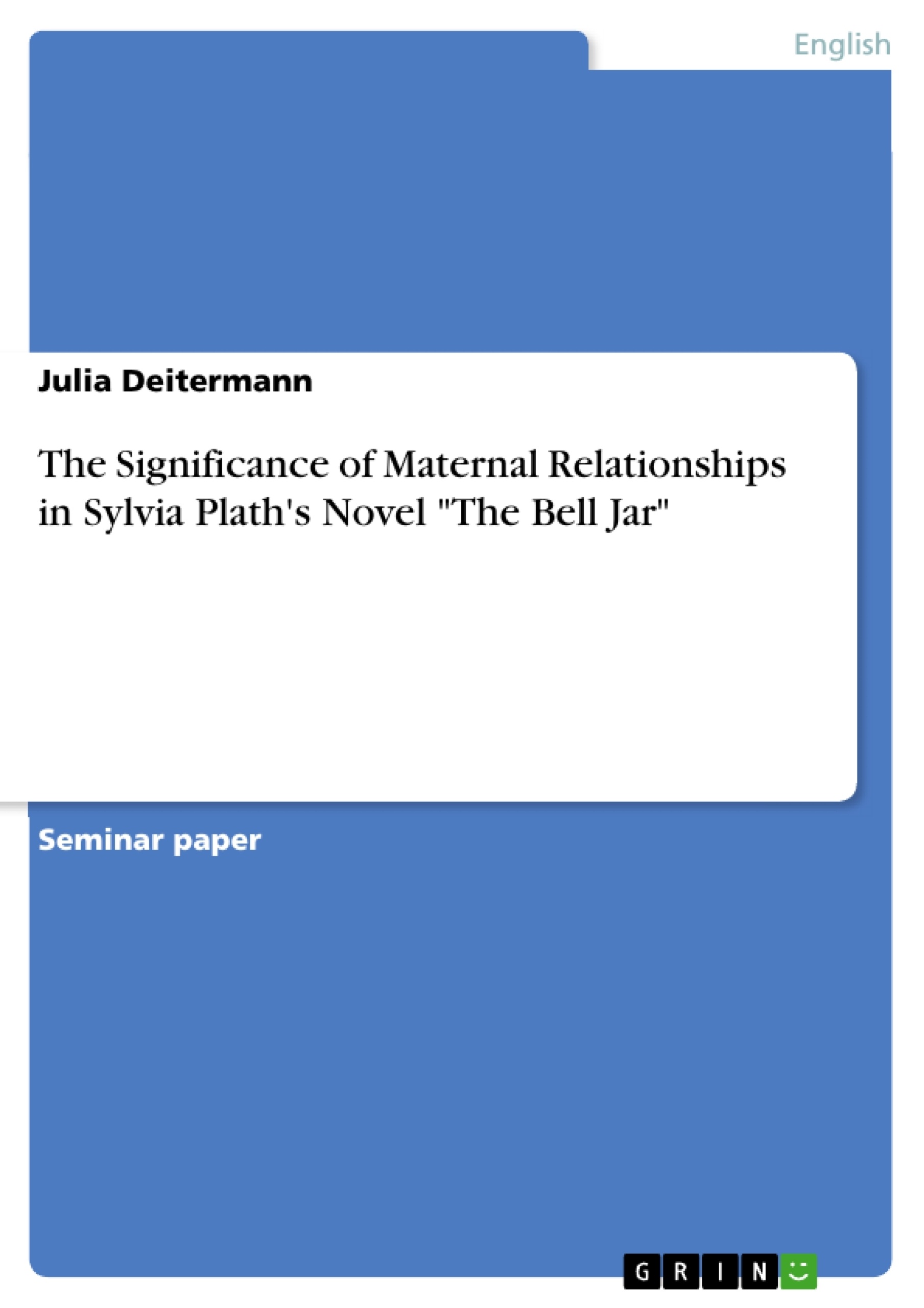“It’s quite amazing how I’ve gone around for most of my life as in the
rarefied atmosphere under a bell jar.” (Plath, Sylvia: The Bell Jar. New York. Harper Collins Publishers 1996, p. 250) Although uttered by Sylvia Plath, this statement fully applies for the protagonist Esther Greenwood
in Plath’s novel The Bell Jar. It exemplifies her feeling of being imprisoned in a world and society she can neither accept nor reject and further reveals the identification of author and protagonist. Both Plath and Esther suffer from living under this sort of glass bell jar which makes it hard for them to breathe and to break free from the regulations of contemporary society. The author Sylvia Plath herself has experienced most of the events in the novel, including psychological disease, depression and suicide attempts. Moreover, most of the characters in The Bell Jar are based on people Plath knew and loved, although she often draws caricatures or uses the device of irony when describing them. Plath’s intention was “to show how isolated a person feels when he is suffering a breakdown” (p.262) but we never completely come to know why this breakdown occurs, which almost leads to her destruction and drives her into madness and the asylum. What we do know, however, is that Esther doubts the traditional way of a woman’s life in the 1950s which means marrying a respectful man, having children and being an obedient housewife. She can hardly decide which way of life to choose and experiences a strong inner conflict between her wish of leading the life of a poet and that of a loving wife and mother. This conflict leads to a fracture in Esther’s inner
self, to diminished self-assurance and false made-up selves. Esther’s mother, although seemingly playing a passive role in the novel, has a significant influence on her daughter’s way of thinking, on her doubt of social values and to a certain extent even on her psychological disease which derives
from her inner disorder. In the following, I will try to analyze the importance and influence of Esther’s relationship to her mother Mrs. Greenwood in the course of the story. In doing so, I will also examine the meaning of maternal bonds in reference to a couple of further female relationships in the novel. Moreover, I will dwell on Esther’s doubt and partial rejection of social and traditional values of her time, most
of which are embodied by her mother. [...]
Inhaltsverzeichnis (Table of Contents)
- The Significance of Maternal Relationships in Sylvia Plath's Novel The Bell Jar
- Introduction
- Esther's Mother, Mrs. Greenwood
- Esther's Fear of Becoming Her Mother
- The Impact of Mrs. Greenwood's Advice on Esther
- Esther's Rejection of the Traditional Role of a Woman
- Other Maternal Relationships
- Conclusion
Zielsetzung und Themenschwerpunkte (Objectives and Key Themes)
This paper examines the importance of maternal relationships in Sylvia Plath's novel The Bell Jar. It aims to analyze the influence of Esther's relationship with her mother, Mrs. Greenwood, on her psychological state and her struggle to define her identity in a society that prescribes traditional roles for women. The paper also considers other maternal relationships in the novel and their impact on Esther's journey.
- The importance of maternal relationships in shaping a woman's identity
- The struggle to reconcile personal aspirations with societal expectations
- The impact of societal pressures on women in the 1950s
- The role of family dynamics in influencing psychological well-being
- The search for alternative maternal figures
Zusammenfassung der Kapitel (Chapter Summaries)
- Introduction: This chapter provides an overview of the novel and establishes the central theme of maternal relationships in Sylvia Plath's The Bell Jar.
- Esther's Mother, Mrs. Greenwood: This chapter delves into the complex relationship between Esther and her mother, highlighting Mrs. Greenwood's influence on Esther's self-perception and her struggle with traditional gender roles.
- Esther's Fear of Becoming Her Mother: This chapter explores Esther's deep-seated fear of replicating her mother's life, which is rooted in her perception of her mother's unhappy marriage and her own desire for independence and self-expression.
- The Impact of Mrs. Greenwood's Advice on Esther: This chapter examines how Mrs. Greenwood's advice regarding career choices and domesticity contributes to Esther's inner conflict and her inability to embrace traditional expectations.
- Esther's Rejection of the Traditional Role of a Woman: This chapter explores Esther's resistance to the societal pressures imposed on women in the 1950s, particularly the expectation of marriage and motherhood, as she seeks to define her own path.
- Other Maternal Relationships: This chapter explores the significance of other maternal relationships in Esther's life, such as her connection with Jay Cee, the chief of the magazine she works for in New York, who serves as a contrasting and supportive maternal figure.
Schlüsselwörter (Keywords)
The main keywords and focus topics of this paper include maternal relationships, gender roles, societal expectations, psychological well-being, identity formation, and the 1950s. The analysis delves into the complexities of mother-daughter relationships, the pressures of conforming to traditional values, and the search for self-definition within a restrictive social context.
- Arbeit zitieren
- Julia Deitermann (Autor:in), 2004, The Significance of Maternal Relationships in Sylvia Plath's Novel "The Bell Jar", München, GRIN Verlag, https://www.grin.com/document/61103



